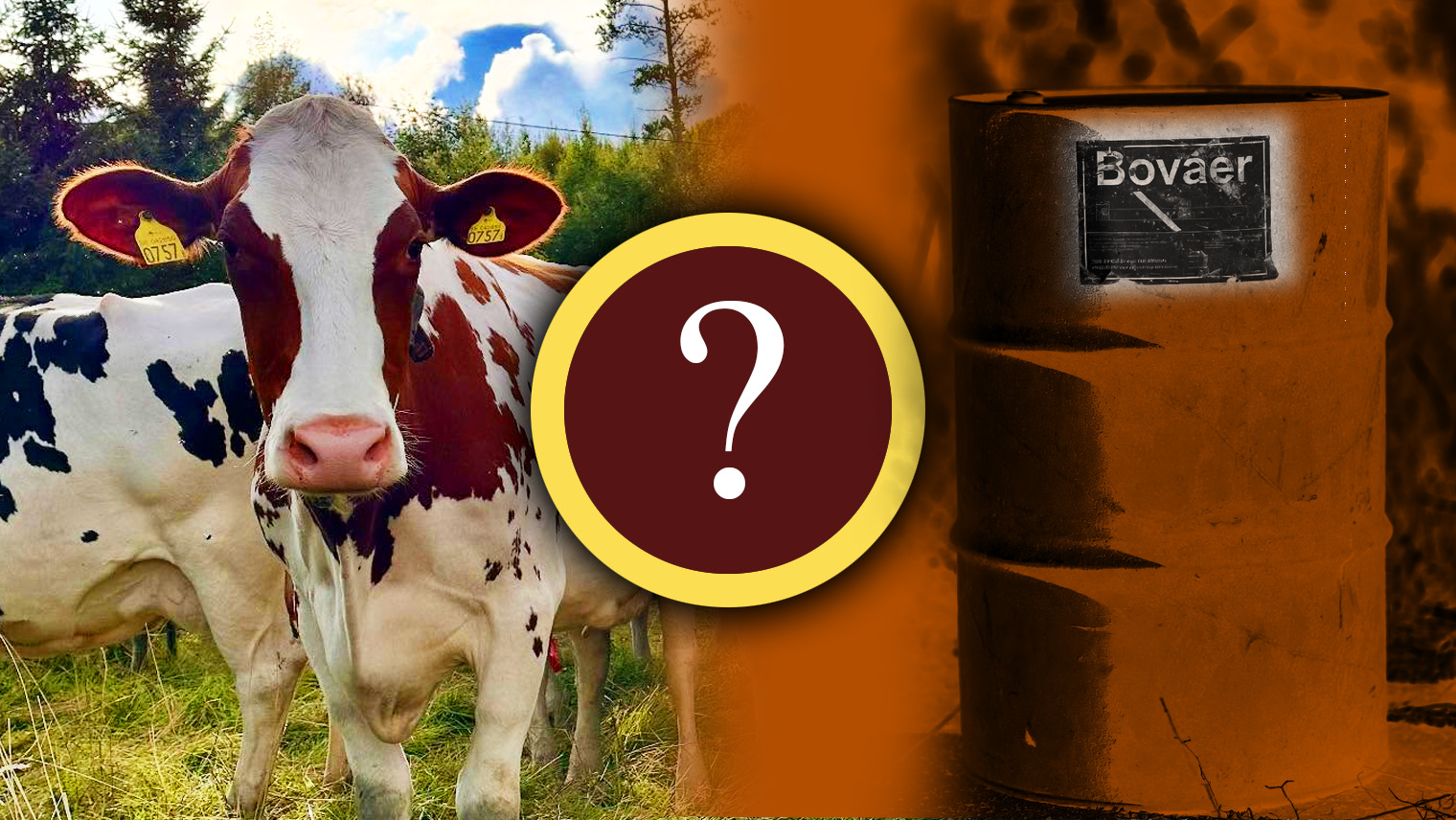When Denmark made the chemical feed supplement Bovaer mandatory for the country’s dairy farms, it only took a few weeks before reports emerged of cows stopping eating, losing milk production, collapsing – and in several cases dying. Now, concerns are growing in Sweden, where both dairies and individual farmers have previously tested the product. Samnytt has spoken with two Swedish dairy producers about what has happened in Denmark, what they have seen themselves – and how far climate policy can really go.
When the Danish government introduced a legal requirement on October 1 to add the methane inhibitor Bovaer to the feed of dairy cows, the ambition was clear: Denmark would become a pioneer in climate policy. On paper, it looked uncomplicated. The product had been reviewed by the EU’s food safety authority EFSA and was considered safe. The goal was to reduce methane emissions from the country’s cows.
READ ALSO: Danish farmers warn: ‘Climate feed makes our cows sick’
But within a few weeks, farmers across the country began to sound the alarm. Several dairy producers testified that the cows became lethargic, lost their appetite, rapidly decreased milk production, and in some cases collapsed. Danish TV2 reported that farmer organizations received numerous calls from ‘unhappy farmers’ who did not recognize their herds after the introduction.
In Farmers Guardian reports several Danish farmers said they had seen a clear pattern: when Bovaer was removed from the feed, the animals improved after just a few days. When the additive was reintroduced, the problems returned. This led to the Danish veterinary authority and Aarhus University launching an urgent investigation to collect data to understand what had happened.
The events have attracted attention far beyond Denmark’s borders. Swedish farmers who had previously tested Bovaer are following the developments with growing concern – and many are now trying to figure out what would happen if a similar requirement were introduced in Sweden.
A first compilation from the Danish advisory and research organization SEGES Innovation shows that 551 dairy farms responded to a survey after the introduction of Bovaer.
Of these, 365 farms reported reduced feed intake and 376 reduced milk production. In 349 cases, an increase in digestive and metabolic problems was also reported, including diarrhea, fever, and typical symptoms of intestinal and rumen-related diseases. SEGES also emphasizes that many farms changed several factors in parallel with the addition – making it difficult to definitively link all problems directly to Bovaer.
Swedish experiences: ‘We never saw any difference – but now we wonder’
One of those who has practical experience with Bovaer is dairy farmer Paulina West in Nordingrå. She participated in a Swedish pilot project before the project was discontinued. She describes to Samnytt that the use of Bovaer did not have any noticeable effects for them.
– We have stopped using it now. But we have never seen any difference in the cows. Neither before nor after we tried, she says.
READ ALSO: This is what the dairies say about Bovaer
But the Danish reports make her wonder.
– I have heard through the grapevine that they have a much higher dose in Denmark. I can’t promise that’s the case, but if it’s the dose that makes them sick – then something is wrong.
Samnytt’s review of available Danish and Swedish sources shows that there are no documented differences in the recommended dosage of Bovaer between Denmark and the trials conducted in Sweden. Both Danish and Swedish projects have been based on the same guidelines from the EU’s food safety authority, EFSA.
Therefore, the Danish reports of collapsed or sick cows do not seem to be explained by any higher or deviating dosage, and must be sought in other factors – something that is now being investigated by the Danish authorities.
If it is proven to be harmful – then it doesn’t work. I wouldn’t use it if my cows got sick from it. The cows come first.
Paulina West, dairy farmer in Nordingrå
In addition to the question of the additive itself, Paulina West repeatedly returns to a broader frustration about how climate policy has come to affect the view of agriculture. She describes a situation where she and other dairy farmers feel heavily pressured by both public opinion and politics, while their operations are often portrayed as one of the biggest climate problems.
West argues that this is based on a simplified image of both cows and emissions. She points out that the number of cows in Sweden is significantly lower than before and that the animals are part of a natural cycle, where the emissions are reabsorbed in the soil and vegetation. As she puts it, it is not the cows that are the problem.
At the same time, she criticizes the fact that the climate debate too rarely distinguishes between biological emissions from agriculture and the fossil emissions from industry, oil, and gas. She returns to the fact that agricultural emissions give something back – food, biological renewability, and a soil-bound carbon cycle – which differs from the emissions created when
